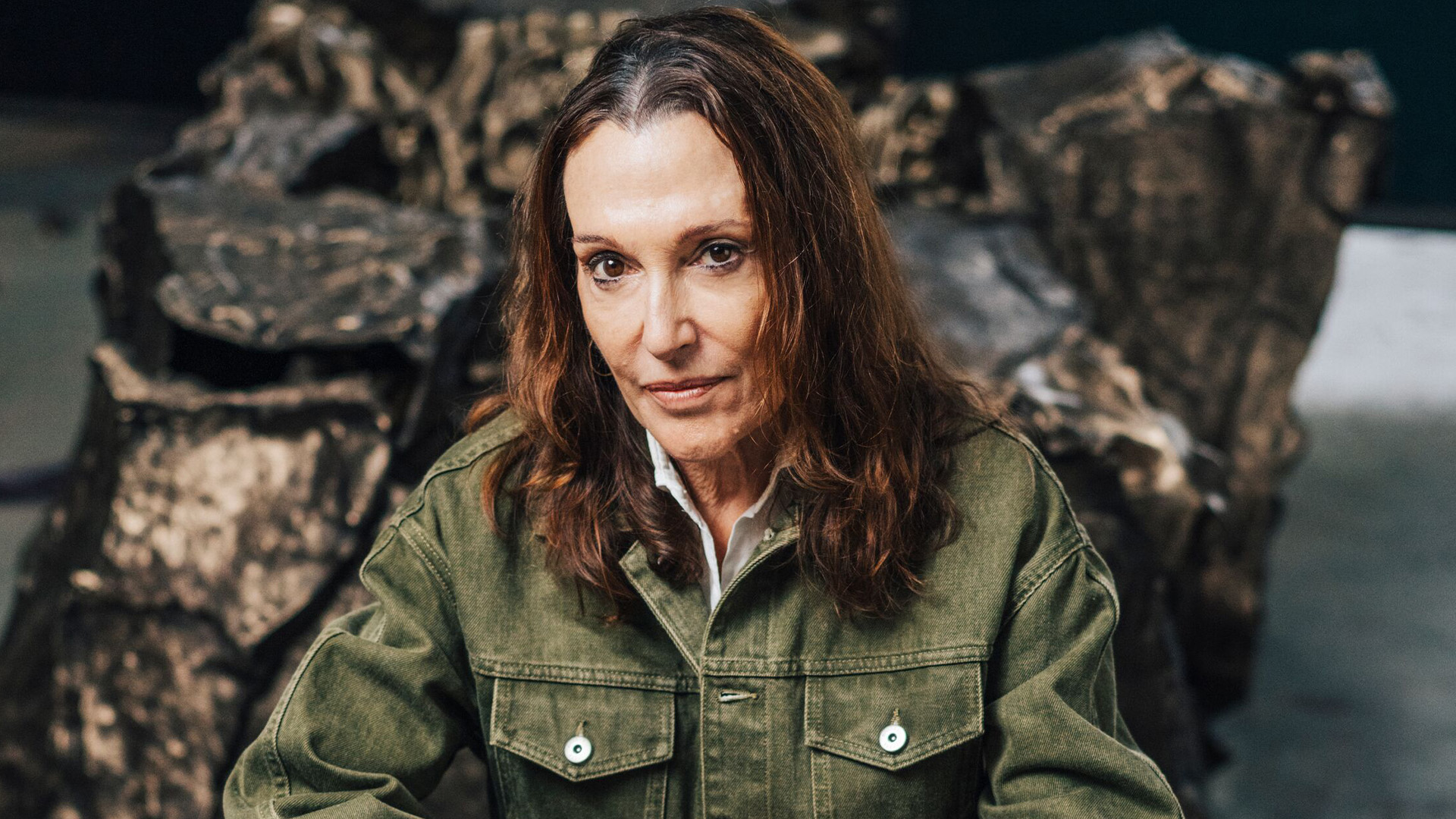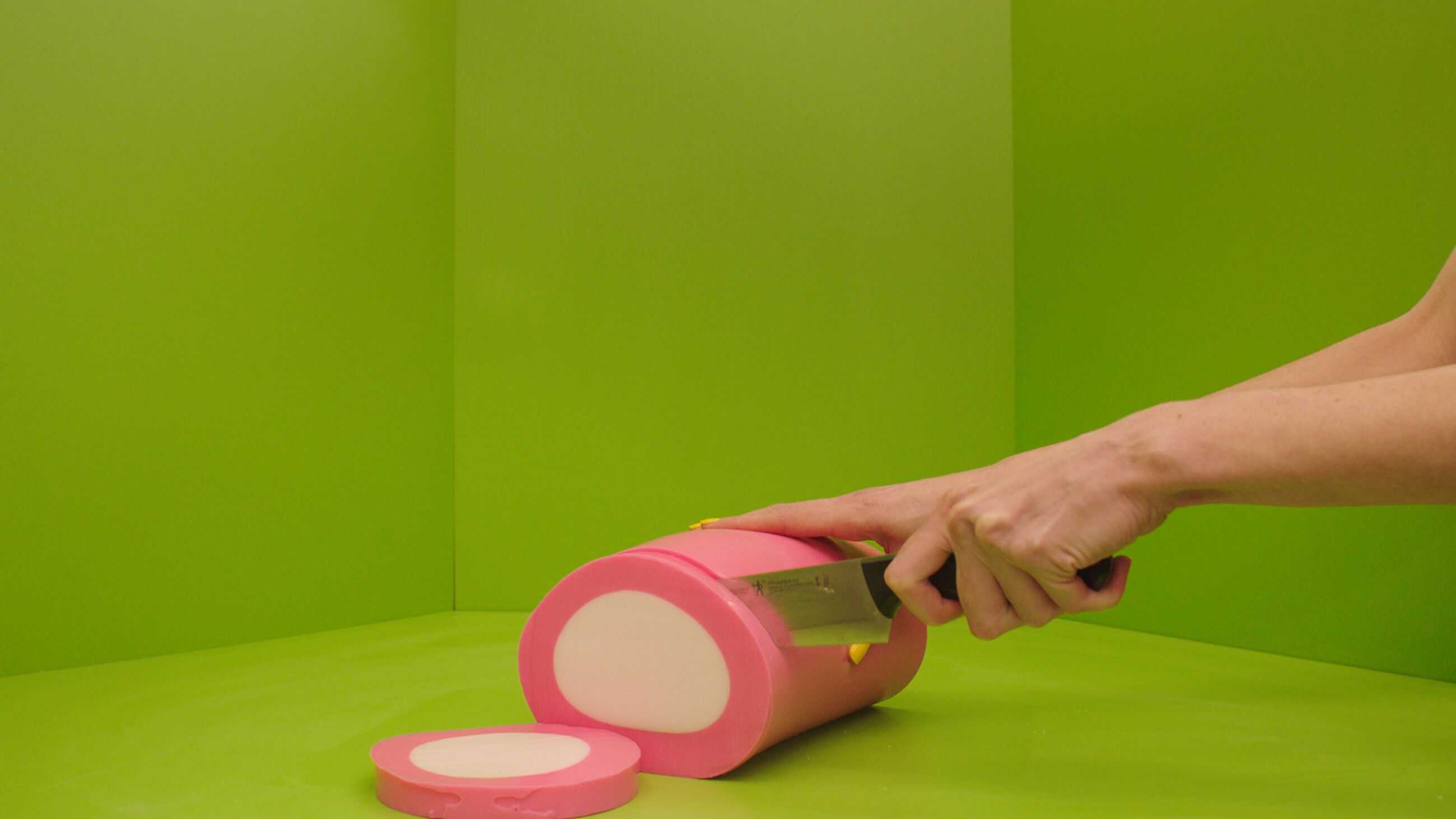Teachers’ Notes: ‘Rodney Graham. Getting it Together in the Country’

Rodney Graham in his studio, 2022. ©️ Rodney Graham. Photo: Sven Boecker
Teachers’ Notes: ‘Rodney Graham. Getting it Together in the Country’
This resource has been produced to accompany the exhibition ‘Rodney Graham. Getting it Together in the Country’ at Hauser & Wirth Somerset from 28 January – 8 May 2023.
About Rodney Graham
Rodney Graham was born in Abbotsford, British Columbia, Canada in 1949. Graham studied art history in Vancouver at the University of British Columbia between 1968 – 1971 and he became connected with the Vancouver School in the 1980s which served as a space for conceptual artists and photographers. In 1997, Graham represented Canada at the 47th Venice Biennale with his film work ‘Vexation Island’ (1997), which bought him international recognition. He was subsequently awarded the Kurt Schwitters Prize in 2003, the Gershon Iskowitz Prize in 2004 and the DAAD Scholarship in 2001. In 2011, Graham was given The Audain Prize for Lifetime Achievement in Visual Arts, British Columbia, Canada. He was appointed as an Officer of the Order of Canada in 2016 for his contributions to Canadian contemporary art.
Graham’s work has been the subject of numerous major solo exhibitions internationally, among them a 2004 retrospective that toured the US and Canada, including, among other venues, MoCA Los Angeles, ICA Philadelphia and Vancouver Art Gallery. His work is included in collections worldwide, such as Musée national d’art moderne – Centre Pompidou, Paris; Tate, London; The Museum of Modern Art, New York; Vancouver Art Gallery, Vancouver; National Gallery of Canada, Ottawa; MACBA, Barcelona; Nationalgalerie – Staatliche Museen zu Berlin, Berlin.

Rodney Graham, Betula Pendula Fastigiata (Sous-Chef on Smoke Break), 2011 © Rodney Graham
What does the exhibition look like?
‘Getting it Together in the Country’ features Graham’s signature photographic lightbox works. These works are elaborate, allegorical and witty compositions focused on his use of the fictional self-portrait to explore scenarios from our collective cultural memory. Each work from this series features the artist in costume portraying a vast array of characters but always recognizable. These characters are often informed by historical, literary, musical, philosophical, and popular references.
How does he make his work?
Graham came out of the 1980s Vancouver School photo-conceptual tradition; a group defined by a style of photography in which moments from art history or fine art are replicated. Graham began using lightboxes in 2000. They feature a lit display panel which illuminates a photographic image to create a smooth, shiny and bright surface. Graham had an exceptional degree of technical expertise. His photographic images were carefully conceived and constructed, from the props and their placement within the frame, to the elaborate costumes and stage sets. To achieve composition, focus from foreground to background and lighting, the lightbox works often consist of 30 to 50 individual images which are then merged into one. It was important to the artist that no elements were created artificially.
Why is the exhibition called ‘Getting it Together in the Country’?
The title takes its name from Graham’s 2000 LP which features improvised guitar recordings. In dialogue with the rural gallery setting, the exhibition features Graham’s major late body of work, The Four Seasons, created between 2011 and 2013. This landmark lightbox series evolved organically and is dedicated to nature’s cycle through meticulously staged mis-en-scènes, reflecting a moment of pause and desire to step out of the daily grind.

Rodney Graham, Smoke Break 2 (Drywaller), 2012 © Rodney Graham
What are the major themes within the exhibition?
Strategies of disguise
In Graham’s fictional self-portraits, the artist takes on the persona of different figures and social constructs, expanding on them or rethinking them with an understated irony. His inspirations included Sigmund Freud, Stéphane Mallarmé, Richard Wagner, Edgar Allan Poe, Ian Fleming and the Brothers Grimm. He emulated Donald Judd and Nirvana’s Kurt Cobain, as well as reconstructing Albert Hoffmann’s experiments with LSD.
High and mass culture
Graham placed himself in sometimes banal or everyday contexts, yet simultaneously alludes to art history and high culture. In so doing, his work undermines and questions the lines and cultural constructs that exist between high and mass culture.
Photography as concept
Photography allowed Graham to reconstruct, reflect and play on reality and fiction. The photographic images are staged to represent an idea or concept rather than being primarily aesthetic or narrative. The inverted trees within ‘Main Street Tree’ (2006) follow the artist’s early experiments with the camera lucida, a room-size pinhole camera that dates to ancient times. Through these works, Graham looks back at the history of photography whilst making the viewer aware of his or her own retinal experience.

Rodney Graham, Main Street Tree, 2006. © Rodney Graham. Photo: Tom Van Eynde
Absurdity, banality and irony
There is absurdity in Graham’s work in which his characters, duplicated and displaced, appear to be caught up in inescapable loops that subvert traditional genres and linear narrative models.
Nature
A central theme within Graham’s work is the relationship between civilization and nature. ‘The Four Seasons’ is dedicated to nature’s cycle through meticulously staged mis-en-scènes, reflecting a moment of pause and desire to step out of the daily grind.
Music
Music was a vital and constant theme in Graham’s life. During the late 1970s, he played electric guitar in the band UJ3RK5 with fellow visual artists Jeff Wall on keyboards and Ian Wallace on electric bass. As well as many other Hauser & Wirth occasions, he performed at the 2014 inauguration festivities in Somerset.
Imagined pasts
Many of the lightbox works are set in the past as Graham was fascinated by the way historical reconstruction invariably betrays the stylistic bias of the time. Rodney speaks of these artificial settings as ‘imagined pasts,’ in the sense that we imagine how a historic past could have looked. For example, the musicians in ‘3 Musicians (Members of the Early Music Group ‘Renaissance Fare’ performing Matteo of Perugia’s ‘Le Greygnour Bien’ at the Unitarian Church of Vancouver, Late September, 1977)’ are imagining themselves as Renaissance musicians. Within these imagined pasts, there is a sense of performative doubling in which the imagined persona is also playing a role, such as the ‘Actor/Director, 1954.’
To find out more about the works featured in ‘Rodney Graham. Getting it Together in the Country’ please refer to the exhibition guide.

Rodney Graham, Paddler, Mouth of the Seymour, 2012 – 2013 © Rodney Graham

Rodney Graham, Actor / Director, 1954, 2013 © Rodney Graham
What other artists does his work relate to?
Martin Creed (b. 1968) is a British artist, composer and performer.
Mike Kelley (b. 1954) was an American artist whose work involved found objects, drawings, textile banners, collage, assemblage, performance and video.
Mika Rottenberg (b. 1976) is an Argentina-born, New York-based contemporary artist whose practice combines film, architectural installation and sculpture to explore ideas around labor and the production of value in today’s world of capitalism.
Cindy Sherman (b. 1954) is an American artist whose photographs have interrogated themes around representation and identity in contemporary media.
Jeff Wall (b. 1946) is a Canadian artist best known for his large-scale, back-lit Cibachrome photographs and art history writing.
Mark Wallinger (b. 1959) is a British artist and is known for his career-long engagement with ideas of power, authority, artifice and illusion.
GLOSSARY
Absurdity
The quality or state of being ridiculous or unreasonable in a humorous way.
Banality
The condition or quality of being unoriginal or lacking novelty.
Capitalism
An economic and political system in which a country’s trade and industry are controlled by private owners for profit.
Chromogenic photography
Photography that works by a chromogen, a colorless chemical compound, forming a conventional silver image and then replacing it with a dye image.
Concept
An idea that is generated and thought about. A plan or intention.
Linear
Progressing from one stage to another in a single series of steps.
Mass culture
Cultural products that are produced for the masses of society.
Memorabilia
Objects that are collected or kept because of their connections with memorable people or moments in time.
Mis-en-scènes
The arrangement of actors and scenery on a stage for theatre of film production.
Reinvent
To change or alter something to the point that it appears to be entirely new.
Self-portrait
A portrait that an individual produces of themselves.
Social construct
An idea that has been created, accepted and integrated by individuals in society.
Western culture
A term that refers to the social norms, values, traditions, belief systems, artifacts, political systems and technologies of the Western world.
Ideas for discussion
What do we mean by a fictional self-portrait? Can you think of someone famous that you would like to pretend to be in a photograph? What accessories would you need for people to recognise who you are? Would you wear a costume? How would you stand? Where would you take the photograph?
Why do you think there is a historic divide between different art forms such as painting, sculpture, opera and more popular mass-media entertainment such as films, television programmes and magazines? How does Rodney Graham make us aware of the way we distinguish between high art and mass culture, and how we determine cultural value?
In what ways does Rodney Graham’s work make you rethink art history and in particular images that you traditionally see in a museum or gallery? Is it still possible to create work that subverts, provokes or exploits the canon?
Do you think that photographic images often lean toward belief or trust that the picture tells a true, unbiased story? How does Rodney Graham disrupt this relationship and call into question the ways in which we ‘read’ images on television, in advertising and on social media?
What can you notice about the composition of each scene in Rodney Graham’s lightbox works? What can you observe about the objects chosen, the division between the foreground and background and the placement of each character?
Resources
1 / 10









